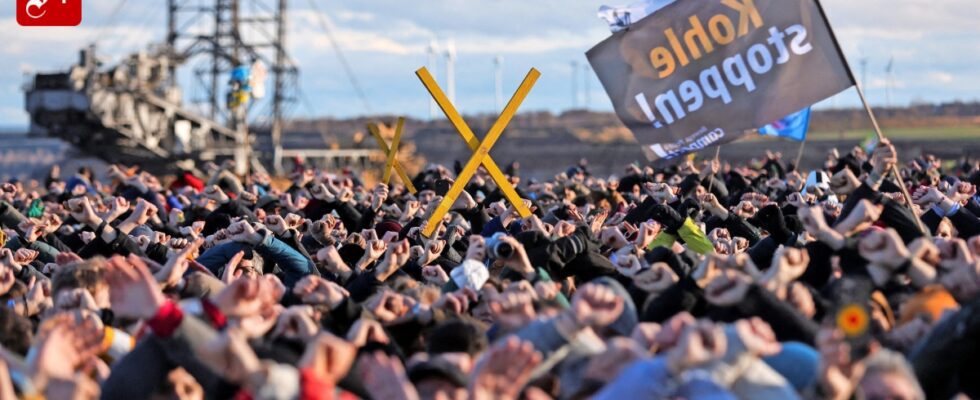Lützerath stands on an artificial high plateau. The former village street ends in a muddy field on which groups of young people are walking. Some wear white corona protective suits to hide their identity from the police. That fits into the dystopian image: Barely more than 100 meters from the small, deserted hamlet in the Rhenish Revier, one of the largest holes ever created by human hands opens up: the Garzweiler II opencast mine Pit as big as a container ship. Day and night, it expands – through layers of clay, sand and gravel to the lignite seams that are millions of years old.
Garzweiler, Otzenrath, Borschemich, Immerath: These are the names of some of the places that have been sacrificed for opencast mining in recent years. Lützerath is to fall soon – as the last place. This is what the agreement that Robert Habeck and Mona Neubaur, the two Greens responsible for economic and climate protection at federal and state level, concluded in October with the opencast mine operator RWE. Garzweiler II will once again be significantly reduced in size, leaving 280 million tons of brown coal, which is particularly harmful to the climate, in the ground. Coal-fired power generation in the Rhenish mining area will not end in 2038, but in 2030. Five places destined to go under will not be demolished after all: Kuckum, Beverath, Unter- and Oberwestrich and Keyenberg. For Habeck and Neubaur, this is a “huge success”, a “milestone for climate protection”.
